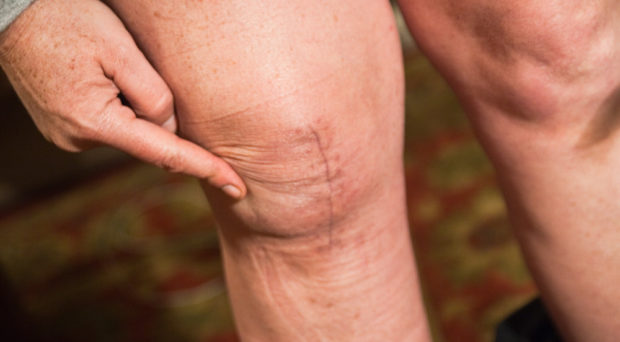
The way patients rate their scars can be highly influenced by many factors such as the location of the scar (visible or hidden), psychological factors such as the memory of the trauma or injury associated with the scar and even how others react to them and their scars including the clinicians themselves.
Clinicians themselves are not exempt. They are susceptible to various factors that can influence how they rate a patient’s scar. A clinician who is less experienced in scars or has not seen many severe scars may rate less severe scars higher.
Even what you’ve just seen previously in the same day can influence this. A study done by the School of Psychology in the University of Sydney, showed that we are likely to rate a face as more attractive depending on the attractiveness of the previous face.
Science has also showed that we cannot always trust our own eyes either when rating a scar, as a recent highly trending topic the “Blue and black dress” shows, there can be significant differences in human colour perception such that a dress that is blue and black to some can be interpreted by others as gold and white.
A major problem in burn scar research is that we depend on visual ratings of scars heavily to determine whether or not an intervention works. Subjective scar scores such as the Vancouver Scar Scale (VSS) and Patient and Observer Scar Assessment Scale (POSAS) are the most widely used methods of assessing and scoring scars in the burns field as these scores are advantageous in terms of low cost and training requirements.
With the emergence of various new surgical and non-surgical technologies that have promising potential in the management of scars, the need for reliable objective scar assessments to back up their claims is greater than before.
However these scores are not quantitative and as previously mentioned, can vary widely between different assessors (patients or observers) depending on various factors. Thus, any perceived change (or lack of change) in the scores over time may not be indicative of the true evolution of the scars.
Objective scar assessments on the other hand should provide reproducible and quantitative scores regardless of the assessors. With the emergence of various new surgical and non-surgical technologies that have promising potential in the management of scars, the need for reliable objective scar assessments to back up their claims is greater than before.
Recently, an article entitled “a systematic review of objective burn scar measurements” is published in Burns & Trauma, and a panel of objective scar measurement tools for burn scars that were reliable, patient friendly, and easy to use is recommended.
Currently available and utilized objective measurements can be grouped into the following categories:
- Colour: quantification of erythema and pigmentation in the scar with colour measurement probes and cameras.
- Physical dimensions: the measurement of surface area, thickness and volume of scars with 2D /3D camera systems and high frequency ultrasound probes.
- Texture: the texture or roughness of the scar surface with advanced textural imaging systems.
- Biomechanical properties: includes the measurement of visco-elastic properties of the scar with suction and non-suction devices.
- Physiological properties: includes measurement of the water content or trans-epidermal water loss and oxygenation of the scar tissue.
New and exciting technologies are also emerging such as non-invasive in vivo imaging techniques which will enable the analysis of the morphological architecture of various components of the scar
Furthermore, new and exciting technologies are also emerging such as non-invasive in vivo imaging techniques which will enable the analysis of the morphological architecture of various components of the scar (e.g. collagen bundle orientation) which were only previously possible through the histopathological analysis of biopsy samples.
None if not all of the existing objective scar measurement devices have been developed for the primary purpose of the measurement of scars and thus have several limitations to their use especially in the large, heterogeneous scars seen in severe burns. Therefore there needs to be a push for clinicians and academics to work closer with the SME’s to encourage further advancement in this important field.
Comments